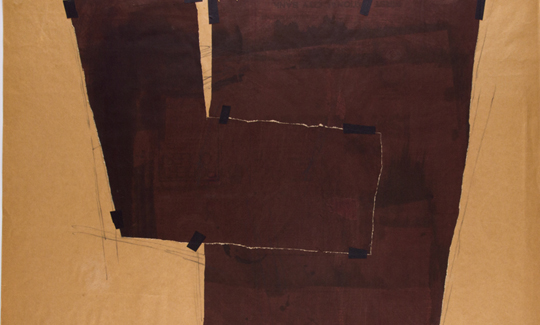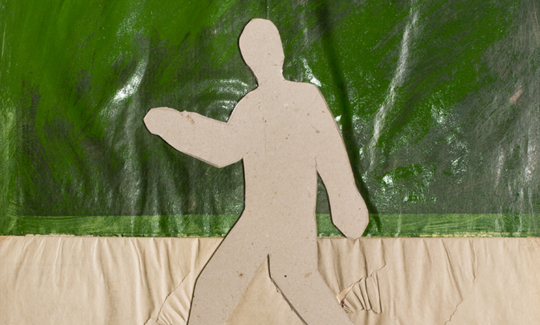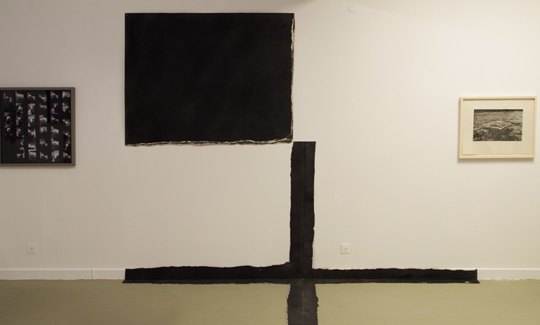Israeli Modernism in the 1970s: from the Collection of the Haifa Museum of Art
Saturday, 23.07.16, 20:00
Saturday, 21.01.17
Curator:
Svetlana Reingold
More info:
046030800The role of the artist in society is like that of an educator, a thinker, a rabbi, a father, a prophet at the gate, a preacher. He must protect the things that were made here. The artist should suggest an idea, indicate a direction, flow always like a stream through society, breaking through the obstacles.
(Yitzhak Danziger, 1977)
Post-postmodernism, which has gained strength in recent years, involves the reawakening of utopian conceptions and of universal truths, moral questions, and humanism. Historically, this artistic approach dates back to the 1970s, when artists formulated their desire to remove the boundaries between art and life – an approach rooted in early modernism. This exhibition seeks to explore the nature of the connection between the post-postmodernist trend in contemporary Israeli art, and Israeli art from the 1970s, when many artists were motivated by a desire to “mend” the world.
This perspective will afford a new look at contemporary artistic practice in light of changes that have occurred in the local scene, and in relation to the global artistic discourse.
In the post-World War II era, the process of rebuilding society’s urban spaces was first influenced by the ideas of the prewar avant-garde. Between the two world wars, the metaphor of space symbolized the great promise concealed in that which has not yet been realized. This metaphor, in its positive aspect – related to expansion and the formation of a social vision – was expressed most prominently after the war in the tendency for abstraction.
The metaphysical ideal of the pre-war European abstract took on a new cast in the form of American Abstract Expressionism. The movement’s artists investigated surface phenomena, and their work was discussed in transcendental terms.
The study of space and its limits is one of the central themes tackled by
Israeli artists of the 1970s, in installations, performance works, body works, and video works. Many of these creations explore the “real territory” (“the frame”) and the metaphorical artistic territory, a plane that is “focused,” often characterized by utopian idealism and harmony and purified of past connotations, signifying a vision of the End of Days, after the era of materialism and nationalism.
Space appears and disappears in the performance works of Joshua
Neustein. The performance addresses the fateful distance between the different elements that constitute the painting: the supporting structure, the frame, the painting surface, the paint, the content, and the artist. The focus of the artist’s attention moves from one element to the next.
Other artists attempted to define space using the basic matrix of the square or the cube. Reuven Berman proposed new means of spatial vision, creating symbolic weaves that explore the privileged status of the cube in the architecture of shrines. Micha Ullman chose to enhance arrays of windowlike rectangles, loading his geometric arrangements with the contexts of local landscapes.
Artists such as Moshe Gershuni, Pinchas Cohen Gan and Yechiel Shemi placed at the center of their work the concept of “periphery” – the country’s borders, as well as the boundaries of the work’s format. They sought to blur the boundaries by means of an act of erasure that symbolized an aspiration to a utopian state of harmony and peace, and a unity of content and form.
The artists of this period worked in historically charged locations. For example, the members of the “Leviathan” group – Avraham Ofek, Shmuel
Ackerman and Michail Grobman – performed symbolic-magical acts at locations laden with religious significance: the shore of the Dead Sea,
Jerusalem, the Negev Desert, and more.
Environmental art activities in the 1970s also took place inside artistic spaces. Shuli Sade Goshen and Joshua Neustein, for example, sought to undermine the boundary between art space and world space (between the symbol and the symbolized). They redefined the artistic space and “birthed” it as a realistic and pragmatic one, with reference to society, nature, and the metaphysical and mythological dimension. The artists explored the space’s walls, floor, and roof in terms of “border lines.” The disruption they presented had the ideational goal of cancelling difference between “there” and “here,” between “the next world” (the external, daily world of existence) and “this world” (the world of art).
The disruption of landscapes and interiors already appears in surrealist paintings from the 1920s and 1930s. The outside invades the room, while the inside spreads out. Yet the disruptive tactics taken by Israeli artists in the 1970s consciously sought to revoke the hermetic internality of the artwork, and to direct art to address the link between inside and outside, between art and life.



